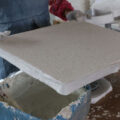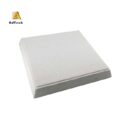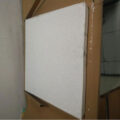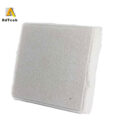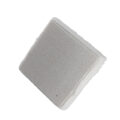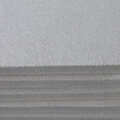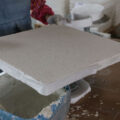The ceramic foam filter will always prevent foreign matter inclusions from entering the molten aluminum casting, and the hardness of the sample filtered by the ceramic foam filter is improved. Ceramic foam filter for molten aluminum is a convenient, cheap and effective method to reduce surface defects of castings.
Features of Ceramic Foam Filter Molten Aluminum Filtration
- Production economy
- Can be made into any shape and size
- Has excellent thermal shock resistance
- Acceptable permeability
- Resistant to chemical corrosion of molten aluminum alloy
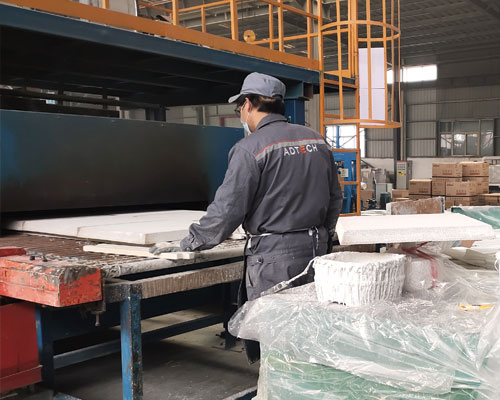
Raw material for Molten Aluminum Filter
Alumina is the most important material component in aluminum alloy ceramic slurry. Silicon carbide, zirconium oxide, chromium oxide and magnesium oxide are the most important parts of the filter material composition of cast iron, steel alloy, copper alloy and magnesium alloy respectively.
Al 2 O 3 is required as a ceramic foam filter for filtering aluminum alloys because aluminum oxide has basic strength to resist the chemical attack of molten aluminum.
Carbon, bentonite and silicon carbide have a content of 20 to 30% by weight and are refractory materials for other additives because they use high thermal shock conductivity in the filter composition.
Bentonite is a natural clay composed of aluminum and silicate, usually containing some magnesium and iron. It has been found that bentonite is an important additive. Bentonite provides a binding function and produces a glassy phase during firing, thereby creating strength in the final product. In addition, bentonite provides control over the uniformity of the slurry in the organic foam material.
The binder material provides sufficient strength to hold the mixture together to form the final product. The binder of the present invention is sodium silicate.
Generally, 10% to 40% of binder and water are present in the slurry. The water content simply obtains the proper fluidity to immerse the polymer foam in the aqueous slurry and coat the sponge. The water component is used to help control the viscosity of the aqueous slurry, which can impregnate the foam with the slurry.


